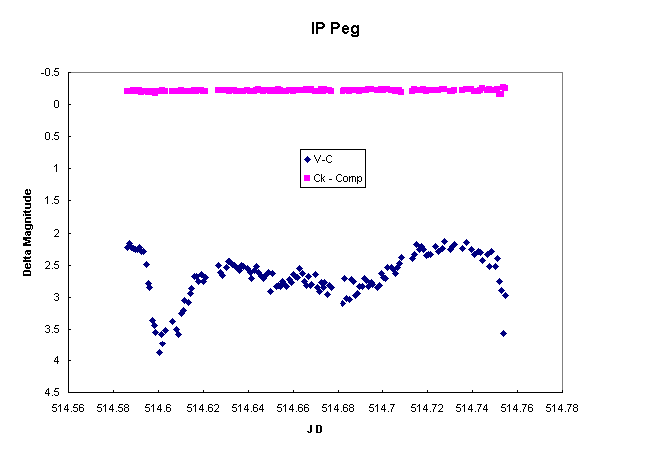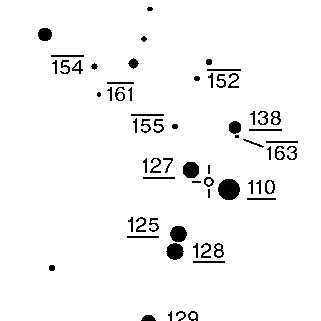 | This cataclysmic variable was a CBA target in a superoutburst. Lew caught it as the SO was ending. The second night Lance Shaw visited and assisted. Thanks to Lance for the help! The star is noteworthy for dramatic eclipses of the primary star and the disk (like Saturn's rings) of hot gas around the primary star, a white dwarf. These eclipses last just about a half hour and result in drops of more than 2 magnitudes from the peak. The photon statistics are challenging when the star is faint, and there is more scatter at the bottom of the light curve than when the star is brighter. As a check on system operability, the check star (indicated as the 127 star in the portion of the AAVSO chart on the left) shows little variation. The star labeled 125 was used as the comparison star while the circle indicates IP Pegasi. South is up in this portion of the 5/97 AAVSO E chart. |
These light curves were collected on UT dates October 22 and 24, 1999. The intervening night was lost to cirrus clouds and a nearly full moon nearby (which was ever present the other 2 nights, but without the clouds). They consist of 11 frame averages of measured brightness of the variable and check star.
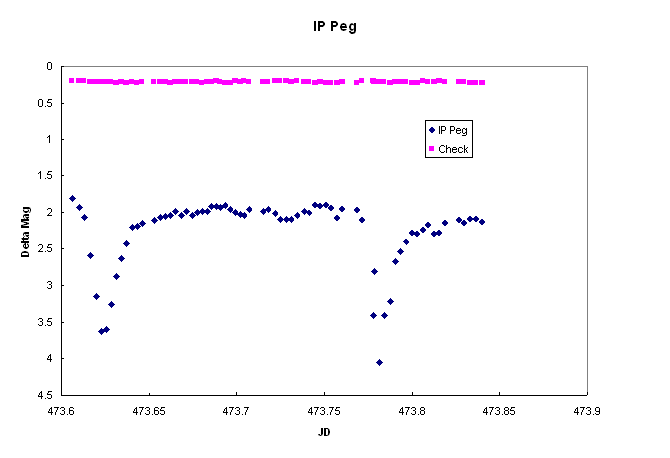
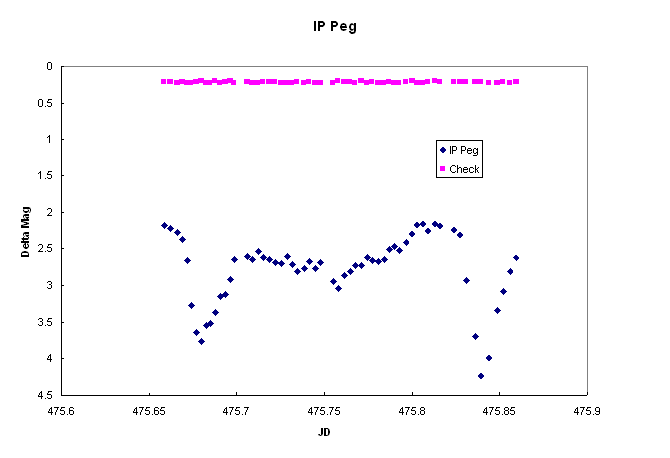
The second night got a late start when the right ascension slewing motor quit working. It is powered by an old reversible hand drill bolted in place. The brushes (at least!) need replacing, but it was restored to working condition by reseating the brushes with first Donna's and later Lance's assistance.
Next weekend, one night's work (Oct. 29 - 30) was lost to incompetence, but another was successful. On the morning of Oct. 30, the infamous night, the right ascension slewing motor died. This old drill had served as a sander, grinder, drill and finally telescope fast drive motor. Another Craftsman reversible variable speed drill - a new one - was taken apart and the controls placed on the umbilical cable that is used at the computer. It operates (thankfully) faster than the old motor and is quieter.
The following night - JD 2451482.6, October 30-31, 1999 was devoted again to IP Peg. 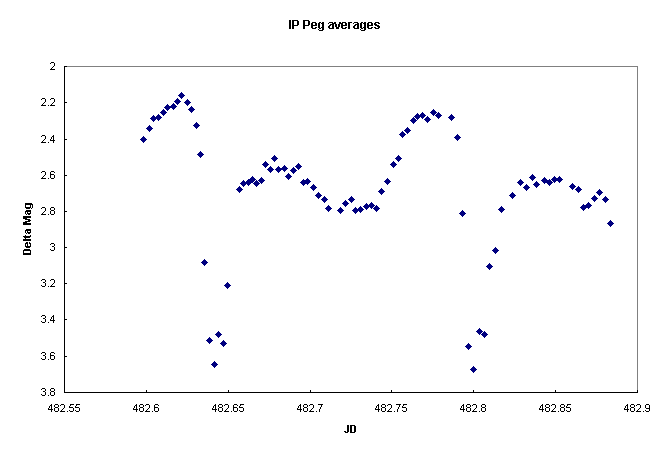
The data is a bit ragged in the bottom of the eclipses even when 11 measurements are combined as shown above. The star is at minimum brightness. Brian Martin of CBA Alberta has also observed IP Peg recently and his light curves are
visible on his web site.
November 11-12, 1999 light curve:

November 25-26, 1999 (Thanksgiving Evening)
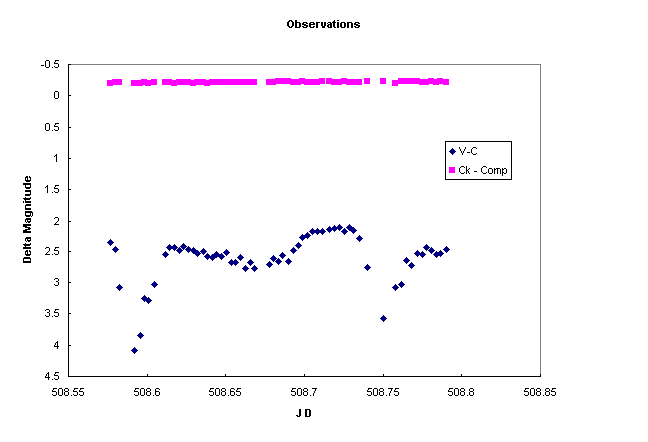
December 1-2, 1999 light curve:
